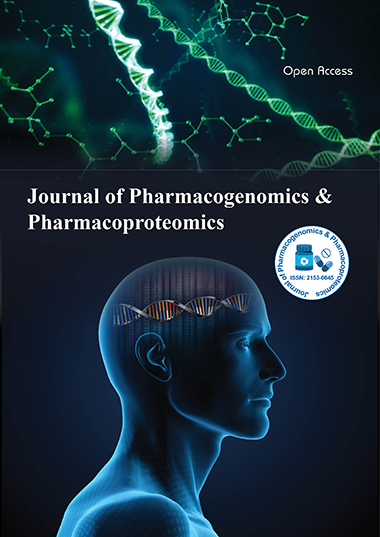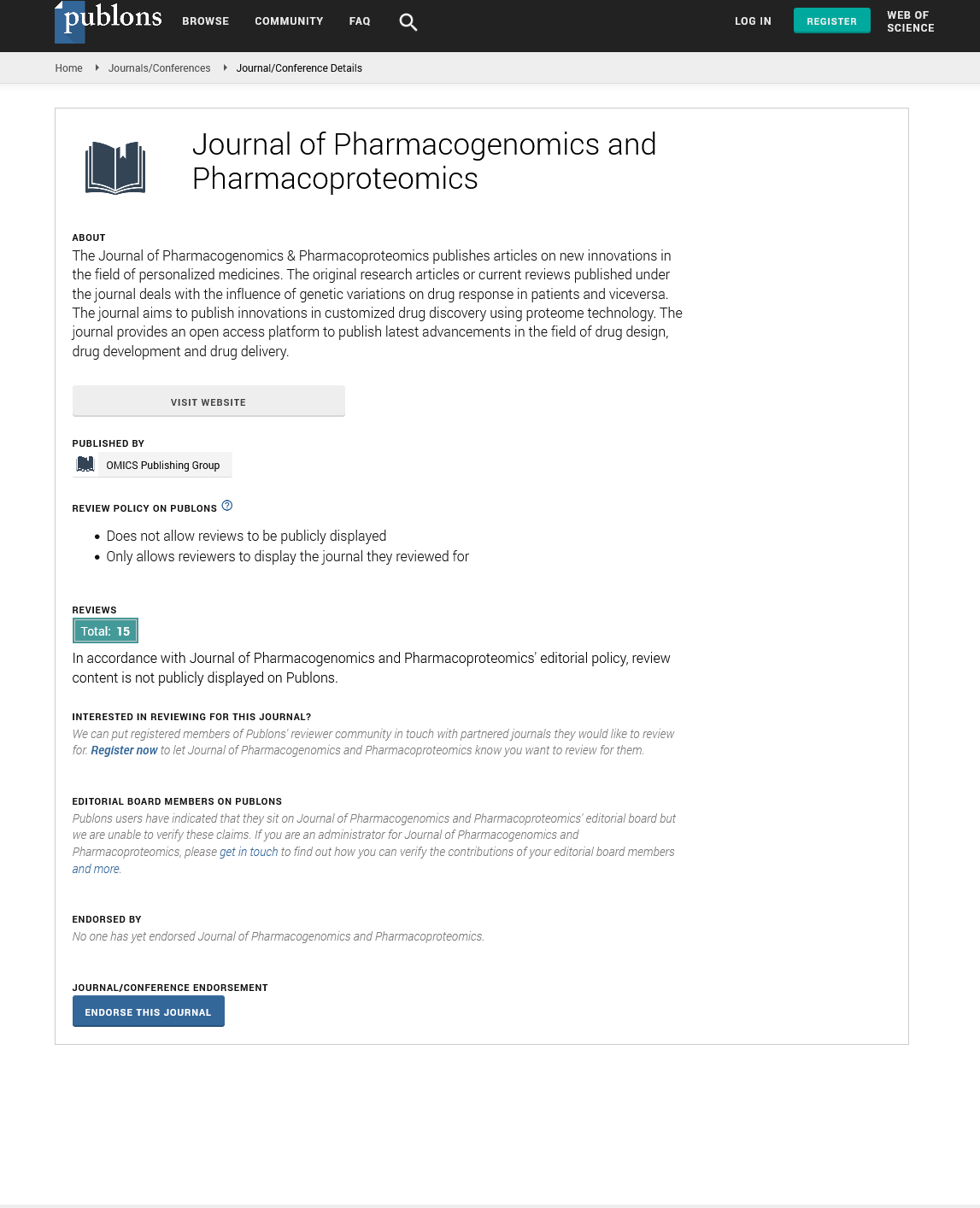Indexed In
- Open J Gate
- Genamics JournalSeek
- Academic Keys
- JournalTOCs
- ResearchBible
- Electronic Journals Library
- RefSeek
- Hamdard University
- EBSCO A-Z
- OCLC- WorldCat
- Proquest Summons
- SWB online catalog
- Virtual Library of Biology (vifabio)
- Publons
- MIAR
- Euro Pub
- Google Scholar
Useful Links
Share This Page
Journal Flyer

Open Access Journals
- Agri and Aquaculture
- Biochemistry
- Bioinformatics & Systems Biology
- Business & Management
- Chemistry
- Clinical Sciences
- Engineering
- Food & Nutrition
- General Science
- Genetics & Molecular Biology
- Immunology & Microbiology
- Medical Sciences
- Neuroscience & Psychology
- Nursing & Health Care
- Pharmaceutical Sciences
Commentary - (2022) Volume 13, Issue 2
Note on RNA Based Cancer Therapy
Charles Frank*Received: 01-Mar-2022, Manuscript No. JPP-22-16441; Editor assigned: 07-Mar-2022, Pre QC No. JPP-22-16441(PQ); Reviewed: 14-Mar-2022, QC No. JPP-22-16441; Revised: 21-Mar-2022, Manuscript No. JPP-22-16441(R); Published: 30-Mar-2022, DOI: 10.4172/2153-0645.22.13.007
Description
RNA interference (RNAi), also known as gene silencing, is a biological process that interferes with gene expression in certain diseases such as cancer. It can be used to improve the accuracy, efficiency and stability of treatments, especially gene therapy. However, there are challenges such as delivery of oligonucleotide drugs to hard-to-access parts of the body and a high incidence of toxic side effects. Therefore, to maximize their potential, it is essential to improve delivery to target sites and reduce their harmful effects on non-cancerous cells. The study discussed the role of RNAi in the treatment of COVID 19, a new coronavirus disease that plagues many countries. This study aims to explore the current challenges of RNAi therapy by establishing the mechanisms and applications of RNAi, identifying several cancer transmission systems, and providing drug information for their improvement. It is noteworthy that delivery systems such as lipidbased delivery systems and exosomes have revolutionized RNAi therapy by reducing immunogenicity and improving cell affinity. A deeper understanding of RNAi-related mechanisms and challenges in cancer treatment may provide new insights into RNAi drug development.
Cancer is one of the most deadly diseases with a poor prognosis and few solutions. Cancer usually begins in the epithelium and generally affects any part of the body. Current cancer statistics (2020) show that cancer mortality has declined since 1990, but larger populations still have more patients who do not have access to more efficient and less painful treatments. Traditional surgery, radiation therapy, and chemotherapy have been the approaches used to treat cancer. Nonetheless, these approaches are associated with long-term financial, physical and psychological burdens. Therefore, new strategies are urgently needed to improve treatment outcomes and reduce these burdens. The discovery of RNAi gene therapy has led to the treatment of some incurable diseases. RNAi treatment causes pharmacological effects via non-coding RNAs (ncRNAs) that regulate cellular events rather than converting them into proteins, and with the use of Small Interfering RNAs (siRNAs) and MicroRNAs (miRNAs), RNAi works quickly.
Small interfering RNAs are double-stranded ncRNAs 20-25 base pairs in length that are loaded into RNA-Induced Silencing Complex (RISC) and degrade and cleave mRNA prior to translation. Small interfering RNAs disrupt post-transcriptional mRNAs containing complementary nucleotide sequences and interfere with the expression of certain genes. This is an important step in the development of most RNAi therapies. On the one hand, siRNA is accurately regarded as an option available for many genetic or rare diseases. On the other hand, the focus of RNAi therapy is to ensure that the therapeutic concentration of the drug reaches the target site in a timely manner due to its easy biodegradability. Next, we loaded the double-stranded miRNA into RISC. One single-stranded miRNA was then degraded and the other mature single-stranded miRNA molecule paired with the target mRNA sequence to regulate gene expression.
Due to its ability to regulate gene expression RNAi is considered an ideal strategy for cancer treatment, apart from traditional long-term strategies. RNAi adapts cancer cells from within the cells and improves the efficiency of cancer treatment. And it helped the revival of RNAi technology. The 2016 Global Health Organization classification of central nervous system tumors classifies Glioblastoma (GBM) as grade IV astrocytoma, a common fatal brain tumor, with many aptamers treating GBM.
Researchers believe that miRNAs are also important regulators of breast cancer. Renoir JM clarified the relationship between breast cancer and miRNA, leading to the discovery of potential treatments. This study details the use of oligonucleotides in the treatment of cancer. Current oligonucleotide drugs are poorly tolerated due to their toxicity to non-cancerous cells. Due to challenges such as off target effects, the therapy has a short duration, limiting treatment efficiency and satisfaction. For this therapy to achieve its therapeutic objective, these off target effects must be addressed. Many carriers have been designed to address these problems. For example, lipid based delivery systems provide high efficiency and stability. Various types of nanoparticles have been used for precise treatment, and their thermodynamic driven reversible self-assembly has led to a broader range of treatments. Currently, several drugs for treating cancers using oligonucleotides have been launched and are available for use.
Citation: Frank C (2022) Note on RNA Based Cancer Therapy. J Pharmacogenom Pharmacoproteomics. 13:007.
Copyright: © 2022 Frank C. This is an open-access article distributed under the terms of the Creative Commons Attribution License, which permits unrestricted use, distribution, and reproduction in any medium, provided the original author and source are credited.

